|
|
General: FRIDAY, JULY 25, 1969 SAINT JAMES TRANSFIGURATION SPAIN S WAY
Elegir otro panel de mensajes |
|
|
|
|
| , MA History, BA History

Jesus Christ had twelve disciples, each of whom accompanied the Biblical savior during His time on earth. Many of them continued His Christian work after the ascension. The twelve men were Peter, James (Jesus’ brother), John, Andrew, Philip, Judas Iscariot (who betrayed Jesus, and was replaced by Matthias), Matthew, Thomas, James, the son of Alpheus, Bartholomew, Judas Thaddeus; and Simon the Zealot. Of them all, Saint James, also known as James, brother of Jesus, James, son of Alpheus, James the Lesser, James the Minor, and James the Just, was one of the most prominent and significant.
James, Son of Alphaeus, James the Greater, and James, the Brother of Jesus
 St James the Minor, Peter Paul Rubens, 1613. Source: Wikipedia St James the Minor, Peter Paul Rubens, 1613. Source: Wikipedia
Various Gospels are often ambiguous, at times, as to which James is being referenced. Two to three James’s are spoken of in the Gospels – James, brother of John (aka James the Greater); James, brother of Jesus, and James, son of Alphaeus. The Catholic doctrine of the perpetual virginity of Mary holds that James the son of Alpheus and James, brother of Jesus are the same person, as James could not be Jesus’ physical full brother. In Protestant readings, the two are separate. If the two are separate, then very little is known regarding James, son of Alpheus.
James, Brother of Jesus
 Statue of St. James the Less in the Archbasilica of St. John Lateran by Angelo de Rossi. Source: Wikipedia Statue of St. James the Less in the Archbasilica of St. John Lateran by Angelo de Rossi. Source: Wikipedia
James, the brother of Jesus, was a follower and Disciple of Jesus Christ during His earthly ministry and one of the first leaders of the early Christian Church. He remained in Jerusalem as leader of the church following the death, burial, resurrection, and ascension of Jesus, and was likely martyred at the temple in Jerusalem.
James’ Position in the Early Church
 St. James the Minor, by Georges de la Tour, 1615-20. Source: Wikipedia St. James the Minor, by Georges de la Tour, 1615-20. Source: Wikipedia
Get the latest articles delivered to your inbox
Sign up to our Free Weekly Newsletter
In Acts 15, a Council in Jerusalem was held regarding circumcision over which James presided. The Acts 15 Council is considered probably the first Christian council, where many Apostles congregated to discuss the matter brought by Paul and Barnabas. In Galatians 1, the Apostle Paul records a meeting with James in the process of Paul confirming his conversion to the other Apostles. James may have been the first elected leader within the early church. Through the writings of Eusebius in the 200s, we have the records of Clement of Alexandria from the second century that James was elected leader of the Jerusalem Church.
St James Was Martyred
 Saint James the Less (Menologion of Basil II). Source: The Byzantine Life Saint James the Less (Menologion of Basil II). Source: The Byzantine Life
The death of James the Just around 62 CE is recorded by Eusebius, Clement of Alexandria, and Josephus. Eusebius copied the chronicles of an earlier Christian, Hegesippus, who wrote that James was martyred by being thrown from the pinnacle of the temple in Jerusalem, and beaten with a club when the fall did not kill him.
Non-canonical Writings Attributed to Saint James
 The Protoevangelium of James, James Orr. Source: Rakuten Kobo The Protoevangelium of James, James Orr. Source: Rakuten Kobo
The Gospel of James, also known as The Protoevangelium of James, is a book of unknown source that was being circulated within the second century church. Both Origen and Clement of Alexandria reference the book in their writings, so it was at least written around that time. The Gospel of James contains the first mention of the idea of the perpetual virginity of Mary, the mother of Jesus. The book was condemned by Pope Innocent I in 405, and it has generally not been accepted throughout church history as canonical due to its late writing and inconstant content.
The First and Second Apocalypse of James and the Apocryphon of James are other 2nd century books whose author claimed to be James. Each of these books were from a collection of gnostic (secret knowledge) texts found in Egypt in 1945. In addition to an authorship too late to be James, they are also part of gnostic texts written in an attempt to legitimize the early movement within Christianity.
James, the Son of Alphaeus
 Two Martyr Saints in an Initial S (Alphaeus and Zacchaeus), 14th century. Source: Victoria and Albert Museum Two Martyr Saints in an Initial S (Alphaeus and Zacchaeus), 14th century. Source: Victoria and Albert Museum
James the son of Alphaeus, while mentioned in the listings of the apostles, has very few details known regarding his life. Outside of being listed among the apostles, and described in the Gospel of Mark as “the lesser” or “the smaller,” he is barely mentioned in the Bible. Several early Christian writings attempt to identify him with James the Just, but most try to maintain the perpetual virginity of Mary in a complex manner. It is speculated that he died as a martyr by crucifixion in Ostrakine, Egypt.
https://www.thecollector.com/who-was-saint-james-brother-of-jesus/ |
|
|
|
|
|
|
|

Hoja informativa del proyecto Viking
Cortesía de la NASA
Viking fue la culminación de una serie de misiones para explorar el planeta Marte ; comenzaron en 1964 con el Mariner 4, y continuaron con los sobrevuelos del Mariner 6 y 7 en 1969, y la misión orbital del Mariner 9 en 1971 y 1972.
La Viking fue diseñada para orbitar Marte y aterrizar y operar en la superficie del planeta. Se construyeron dos naves espaciales idénticas, cada una compuesta por un módulo de aterrizaje y un orbitador.
El Centro de Investigación Langley de la NASA en Hampton, Virginia, fue el responsable de la gestión del proyecto Viking desde su inicio en 1968 hasta el 1 de abril de 1978, cuando el Laboratorio de Propulsión a Chorro asumió la tarea. Martin Marietta Aerospace en Denver, Colorado, desarrolló los módulos de aterrizaje. El Centro de Investigación Lewis de la NASA en Cleveland, Ohio, fue el responsable de los vehículos de lanzamiento Titán-Centauro. La tarea inicial del JPL fue el desarrollo de los orbitadores, el seguimiento y la adquisición de datos, y el Centro de Control de Misión y Computación.
La NASA lanzó ambas naves espaciales desde Cabo Cañaveral, Florida: la Viking 1 el 20 de agosto de 1975 y la Viking 2 el 9 de septiembre de 1975. Las sondas fueron esterilizadas antes del lanzamiento para evitar la contaminación de Marte con organismos de la Tierra. La nave espacial pasó casi un año navegando hacia Marte. La Viking 1 alcanzó la órbita de Marte el 19 de junio de 1976; la Viking 2 comenzó a orbitar Marte el 7 de agosto de 1976.
Después de estudiar las fotografías del orbitador, el equipo de certificación del sitio de aterrizaje de Viking consideró que el lugar de aterrizaje original de Viking 1 no era seguro. El equipo examinó los sitios cercanos y Viking 1 aterrizó el 20 de julio de 1976 en la ladera occidental de Chryse Planitia (las llanuras de oro) a 22,3° de latitud norte y 48,0° de longitud.
El equipo de certificación del sitio también decidió que el lugar de aterrizaje planeado para Viking 2 no era seguro después de examinar fotografías de alta resolución. La certificación de un nuevo lugar de aterrizaje se llevó a cabo a tiempo para un aterrizaje en Marte el 3 de septiembre de 1976, en Utopia Planitia, a 47,7° de latitud norte y 225,8° de longitud.
La misión Viking estaba prevista para continuar durante 90 días después del aterrizaje. Cada orbitador y módulo de aterrizaje funcionó mucho más allá de su vida útil prevista. El Viking Orbiter 1 superó los cuatro años de operaciones de vuelo activas en la órbita de Marte.
La misión principal del proyecto Viking finalizó el 15 de noviembre de 1976, 11 días antes de la conjunción superior de Marte (su paso por detrás del Sol). Después de la conjunción, a mediados de diciembre de 1976, los controladores restablecieron las operaciones de telemetría y comando y comenzaron las operaciones de la misión extendida.
La primera nave espacial que dejó de funcionar fue la Viking Orbiter 2 el 25 de julio de 1978; la nave espacial había utilizado todo el gas de su sistema de control de actitud, que mantenía los paneles solares de la nave apuntando al Sol para alimentar el orbitador. Cuando la nave espacial se alejó de la línea del Sol, los controladores del JPL enviaron órdenes para apagar el transmisor de la Viking Orbiter 2.
En 1978, la Viking Orbiter 1 empezó a quedarse sin gas para el control de actitud, pero gracias a una cuidadosa planificación para conservar el suministro restante, los ingenieros descubrieron que era posible seguir adquiriendo datos científicos a un nivel reducido durante otros dos años. El suministro de gas finalmente se agotó y la Viking Orbiter 1 dejó de funcionar el 7 de agosto de 1980, después de 1.489 órbitas alrededor de Marte.
Los últimos datos de la sonda Viking Lander 2 llegaron a la Tierra el 11 de abril de 1980. La sonda Lander 1 realizó su última transmisión a la Tierra el 11 de noviembre de 1982. Los controladores del JPL intentaron, sin éxito, durante otros seis meses y medio recuperar el contacto con la sonda Viking Lander 1. La misión finalizó el 21 de mayo de 1983.
Con una sola excepción (los instrumentos sísmicos), los instrumentos científicos adquirieron más datos de los esperados. El sismómetro de la sonda Viking Lander 1 no funcionó después del aterrizaje y el sismómetro de la sonda Viking Lander 2 detectó solo un evento que pudo haber sido sísmico. Sin embargo, proporcionó datos sobre la velocidad del viento en el lugar de aterrizaje para complementar la información del experimento meteorológico y mostró que Marte tiene un fondo sísmico muy bajo.
Los tres experimentos de biología descubrieron una actividad química inesperada y enigmática en el suelo marciano, pero no aportaron pruebas claras de la presencia de microorganismos vivos en el suelo cercano a los lugares de aterrizaje. Según los biólogos de la misión, Marte se autoesteriliza. Creen que la combinación de la radiación ultravioleta solar que satura la superficie, la extrema sequedad del suelo y la naturaleza oxidante de la química del suelo impiden la formación de organismos vivos en el suelo marciano. La cuestión de si hubo vida en Marte en algún momento del pasado lejano sigue abierta.
Los instrumentos de cromatografía de gases y espectrómetro de masas de los módulos de aterrizaje no detectaron ningún signo de química orgánica en ninguno de los dos lugares de aterrizaje, pero sí proporcionaron un análisis preciso y definitivo de la composición de la atmósfera marciana y encontraron elementos traza no detectados anteriormente. Los espectrómetros de fluorescencia de rayos X midieron la composición elemental del suelo marciano.
La sonda Viking midió las propiedades físicas y magnéticas del suelo. A medida que descendían hacia la superficie, también midieron la composición y las propiedades físicas de la atmósfera superior marciana.
Los dos módulos de aterrizaje monitorizaron continuamente el tiempo en los lugares de aterrizaje. El tiempo en pleno verano marciano era repetitivo, pero en otras estaciones se volvía variable y más interesante. Aparecieron variaciones cíclicas en los patrones meteorológicos (probablemente el paso de ciclones y anticiclones alternos). Las temperaturas atmosféricas en el lugar de aterrizaje sur (Viking Lander 1) fueron tan altas como -14 °C (7 °F) al mediodía, y la temperatura de verano antes del amanecer fue de -77 °C (-107 °F). En contraste, las temperaturas diurnas en el lugar de aterrizaje norte (Viking Lander 2) durante las tormentas de polvo de mediados de invierno variaron tan poco como 4 °C (7 °F) algunos días. La temperatura más baja antes del amanecer fue de -120 °C (-184 °F), aproximadamente el punto de congelación del dióxido de carbono. Una fina capa de escarcha de agua cubría el suelo alrededor de Viking Lander 2 cada invierno.
La presión barométrica varía en cada lugar de aterrizaje cada seis meses, porque el dióxido de carbono, el principal componente de la atmósfera, se congela formando un inmenso casquete polar, alternativamente en cada polo. El dióxido de carbono forma una gran capa de nieve y luego se evapora de nuevo con la llegada de la primavera en cada hemisferio. Cuando el casquete polar sur era más grande, la presión media diaria observada por la Viking Lander 1 era tan baja como 6,8 milibares; en otras épocas del año era tan alta como 9,0 milibares. Las presiones en el lugar de aterrizaje de la Viking Lander 2 fueron de 7,3 y 10,8 milibares. (A modo de comparación, la presión superficial en la Tierra a nivel del mar es de unos 1.000 milibares).
Los vientos marcianos suelen soplar más lentamente de lo esperado. Los científicos habían esperado que alcanzaran velocidades de varios cientos de kilómetros por hora a partir de las tormentas de polvo globales observadas, pero ninguno de los módulos de aterrizaje registró ráfagas superiores a los 120 kilómetros por hora y las velocidades medias fueron considerablemente inferiores. No obstante, los orbitadores observaron más de una docena de pequeñas tormentas de polvo. Durante el primer verano austral se produjeron dos tormentas de polvo globales, con una diferencia de unos cuatro meses terrestres. Ambas tormentas oscurecieron el Sol en los lugares de aterrizaje durante un tiempo y ocultaron la mayor parte de la superficie del planeta a las cámaras de los orbitadores. Los fuertes vientos que provocaron las tormentas soplaron en el hemisferio sur.
Las fotografías tomadas desde los módulos de aterrizaje y los orbitadores superaron las expectativas en cuanto a calidad y calidad. El total superó las 4.500 tomadas desde los módulos de aterrizaje y las 52.000 tomadas desde los orbitadores. Los módulos de aterrizaje proporcionaron la primera mirada de cerca a la superficie, monitorearon las variaciones en la opacidad atmosférica a lo largo de varios años marcianos y determinaron el tamaño medio de los aerosoles atmosféricos. Las cámaras de los orbitadores observaron terrenos nuevos y a menudo desconcertantes y proporcionaron detalles más claros sobre características conocidas, incluidas algunas observaciones en color y estéreo. Los orbitadores de Viking cartografiaron el 97 por ciento de la superficie marciana.
Los cartografiadores térmicos infrarrojos y los detectores de agua atmosférica de los orbitadores adquirieron datos casi a diario, observando el planeta en baja y alta resolución. La enorme cantidad de datos de los dos instrumentos requerirá un tiempo considerable para el análisis y la comprensión de la meteorología global de Marte. Viking también determinó definitivamente que el manto de hielo residual del polo norte (que sobrevive al verano boreal) es hielo de agua, en lugar de dióxido de carbono congelado (hielo seco) como se creía anteriormente.
El análisis de las señales de radio de los módulos de aterrizaje y los orbitadores (incluidos los datos Doppler, de distancia y de ocultación, y la intensidad de la señal del enlace de retransmisión entre el módulo de aterrizaje y el orbitador) proporcionó una variedad de información valiosa.
Otros descubrimientos importantes de la misión Viking incluyen:
- La superficie marciana es un tipo de arcilla rica en hierro que contiene una sustancia altamente oxidante que libera oxígeno cuando se moja.
- La superficie no contiene moléculas orgánicas detectables a nivel de partes por mil millones: menos, de hecho, que las muestras de suelo traídas de la Luna por los astronautas del Apolo.
- El nitrógeno, nunca antes detectado, es un componente significativo de la atmósfera marciana, y el enriquecimiento de los isótopos más pesados de nitrógeno y argón en relación con los isótopos más ligeros implica que la densidad atmosférica era mucho mayor que en el pasado distante.
- Los cambios en la superficie marciana se producen con extrema lentitud, al menos en los lugares de aterrizaje de la sonda Viking. Durante la duración de la misión, solo se produjeron unos pocos cambios menores.
- La mayor concentración de vapor de agua en la atmósfera se da cerca del borde del casquete polar norte a mediados del verano. Desde el verano hasta el otoño, la concentración máxima se desplaza hacia el ecuador, con una disminución del 30 por ciento en la abundancia máxima. En el verano austral, el planeta está seco, probablemente también como efecto de las tormentas de polvo.
- La densidad de ambos satélites de Marte es baja (unos dos gramos por centímetro cúbico), lo que implica que se originaron como asteroides capturados por la gravedad de Marte. La superficie de Fobos está marcada por dos familias de estrías paralelas, probablemente fracturas causadas por un gran impacto que casi pudo haber destrozado a Fobos.
- Las mediciones del tiempo de ida y vuelta de las señales de radio entre la Tierra y la sonda Viking, realizadas mientras Marte se encontraba más allá del Sol (cerca de las conjunciones solares), han determinado que el retraso de las señales es causado por el campo gravitatorio del Sol. El resultado confirma la predicción de Albert Einstein con una precisión estimada del 0,1 por ciento, veinte veces mayor que cualquier otra prueba.
- La presión atmosférica varía un 30 por ciento durante el año marciano porque el dióxido de carbono se condensa y sublima en los casquetes polares.
- La capa norte permanente es hielo de agua; la capa sur probablemente retiene algo de hielo de dióxido de carbono durante el verano.
- El vapor de agua es relativamente abundante sólo en el extremo norte durante el verano, pero el agua subterránea (permafrost) cubre gran parte, si no todo, del planeta.
- Los hemisferios norte y sur son drásticamente diferentes climáticamente, debido a las tormentas de polvo globales que se originan en el sur en verano.
https://solarviews-com.translate.goog/span/vikingfs.htm?_x_tr_sl=en&_x_tr_tl=es&_x_tr_hl=es&_x_tr_pto=sc
|
|
|
|
|
July 25 Events in History
June 18, 2024
July 25th has witnessed a series of pivotal events that have shaped the course of history across various fields.
From groundbreaking achievements in aviation and medical science to significant political shifts and cultural moments, this day encapsulates a diverse array of historical milestones.
Join us as we explore some of the most notable occurrences on this date, delving into their impacts and legacies that continue to resonate today.
July 25th – On this Day in History
306 – Constantine I proclaimed Roman Emperor
On July 25, 306, Constantine the Great was declared Roman Emperor by his troops after the death of his father, Constantius Chlorus, in Eboracum (modern-day York, England).
This proclamation marked the beginning of Constantine’s reign, during which he would play a crucial role in shaping the future of the Roman Empire.
Also Read: July 24 Events in History
His subsequent policies and reforms, including the Edict of Milan in 313, which granted religious tolerance to Christians, had a lasting impact on both the empire and the Christian religion. Constantine’s rule laid the foundation for the Byzantine Empire and the spread of Christianity throughout Europe.
315 – Arch of Constantine inaugurated in Rome
The Arch of Constantine, one of Rome’s most famous monuments, was inaugurated on July 25, 315. Erected to commemorate Constantine I’s victory over Maxentius at the Battle of the Milvian Bridge in 312, the arch stands near the Colosseum.
It is a triumphal arch adorned with sculptures and reliefs that celebrate Constantine’s victory and his consolidation of power.
The arch not only served as a political symbol of Constantine’s authority but also showcased the artistic and architectural styles of the time, incorporating elements from earlier monuments to glorify the emperor’s achievements.
1261 – Constantinople recaptured by Nicaean forces, ending the Latin Empire
On July 25, 1261, forces from the Empire of Nicaea recaptured Constantinople, ending the Latin Empire established by the Fourth Crusade in 1204. This event marked the restoration of the Byzantine Empire under Emperor Michael VIII Palaiologos.
Also Read: July 26th – On this Day in History
The recapture of the city was a significant turning point, as it restored Byzantine control over its historic capital. However, the empire never fully recovered its former power and prestige, struggling against internal strife and external threats until its eventual fall to the Ottoman Turks in 1453.
1593 – Henry IV of France converted from Protestantism to Catholicism
On July 25, 1593, Henry IV of France converted from Protestantism to Catholicism, famously stating, “Paris is well worth a mass.” This pragmatic decision was made to secure his position as king and bring peace to a country torn apart by religious wars.
His conversion helped to end the French Wars of Religion, a series of conflicts between Catholics and Huguenots (French Protestants), and paved the way for the Edict of Nantes in 1598, which granted religious tolerance to Protestants.
Henry IV’s reign brought stability and prosperity to France and earned him the nickname “Good King Henry.”
1759 – French defeated at the Battle of Ticonderoga in the Seven Years’ War
On July 25, 1759, during the Seven Years’ War, British forces under General Jeffrey Amherst captured the French stronghold of Fort Carillon (later renamed Fort Ticonderoga) in present-day New York. This victory was part of a larger campaign to gain control over the strategic waterways of North America.
The fall of Ticonderoga marked a turning point in the war in favor of the British, who sought to expand their colonial territories at the expense of the French. The victory opened the way for further British advances into Canada and played a significant role in shaping the future of North America.
1797 – Horatio Nelson lost more than 300 men and his right arm during the failed conquest of Tenerife
On July 25, 1797, British Admiral Horatio Nelson led an attack on Santa Cruz de Tenerife in the Canary Islands during the French Revolutionary Wars. The expedition aimed to capture the strategic port, but it ended in failure.
During the battle, Nelson sustained a severe wound, resulting in the amputation of his right arm. Despite this setback, he displayed remarkable resilience and continued his naval career, eventually becoming one of Britain’s greatest naval heroes. This event highlighted his determination and contributed to his legendary status.
1814 – War of 1812: Battle of Lundy’s Lane, one of the bloodiest battles of the war, takes place
The Battle of Lundy’s Lane, one of the bloodiest battles of the War of 1812, took place on July 25, 1814, near Niagara Falls. American and British forces clashed in a fierce and indecisive engagement that lasted well into the night.
Despite high casualties on both sides, neither could claim a decisive victory. The battle demonstrated the intensity of the conflict along the Canadian-American border and underscored the strategic stalemate that characterized much of the war. It also highlighted the valor and resilience of both American and British troops.
1837 – First commercial use of an electric telegraph
On July 25, 1837, the first commercial use of an electric telegraph took place, marking a significant advancement in communication technology.
Developed by William Fothergill Cooke and Charles Wheatstone in England, the telegraph revolutionized long-distance communication by transmitting messages through electrical signals over wires.
This innovation laid the groundwork for the global telecommunications industry, transforming how information was shared and playing a crucial role in commerce, journalism, and personal communication.
1861 – Congress passed the Crittenden-Johnson Resolution, stating the Civil War was fought to preserve the Union, not to end slavery
On July 25, 1861, the United States Congress passed the Crittenden-Johnson Resolution, asserting that the ongoing Civil War was being fought to preserve the Union, not to interfere with slavery. This resolution aimed to maintain the loyalty of the border states and reassure Northerners who were concerned about the war’s purpose.
However, as the war progressed, the focus shifted increasingly towards the abolition of slavery, especially after the issuance of the Emancipation Proclamation in 1863. The resolution reflects the complex and evolving motivations behind the Union’s war effort.
1866 – Ulysses S. Grant became the first General of the Army
On July 25, 1866, Ulysses S. Grant was appointed as the first General of the Army, a newly created rank in the United States military.
This appointment recognized Grant’s leadership and success as a Union general during the Civil War, particularly his role in key victories at battles such as Vicksburg and Appomattox.
As General of the Army, Grant oversaw the post-war military and played a significant role in Reconstruction efforts. His leadership and strategic acumen contributed to his later election as the 18th President of the United States.
1898 – United States invades Puerto Rico during the Spanish-American War
On July 25, 1898, during the Spanish-American War, American forces led by General Nelson A. Miles invaded Puerto Rico. This military action was part of a larger campaign against Spanish colonial rule in the Caribbean and the Pacific. The invasion was relatively swift, facing limited resistance from Spanish troops.
The conflict resulted in the Treaty of Paris, which ceded Puerto Rico, Guam, and the Philippines to the United States, significantly expanding American influence and marking a turning point in U.S. imperialism.
1909 – Louis Blériot makes the first flight across the English Channel in a heavier-than-air machine
On July 25, 1909, French aviator Louis Blériot made history by becoming the first person to fly across the English Channel in a heavier-than-air aircraft. He piloted his Blériot XI monoplane from Calais, France, to Dover, England, covering the distance in about 37 minutes.
This achievement demonstrated the potential of aviation and marked a significant milestone in the development of powered flight. Blériot’s successful crossing captured the public’s imagination and paved the way for future advancements in aviation technology and commercial air travel.
1917 – Mata Hari sentenced to death for espionage
On July 25, 1917, the renowned dancer and courtesan Mata Hari was sentenced to death by a French military court for espionage during World War I.
Accused of spying for Germany, she was portrayed as a dangerous femme fatale, although the evidence against her was largely circumstantial.
Her trial and execution highlighted the paranoia and fear of espionage that pervaded wartime Europe. Mata Hari’s story has since become legendary, symbolizing the intrigue and moral complexities of espionage during the war.
1943 – Benito Mussolini dismissed as Italian premier; arrested
On July 25, 1943, Italian dictator Benito Mussolini was dismissed from power by King Victor Emmanuel III and subsequently arrested.
This event marked a turning point in World War II, as Mussolini’s downfall signaled the collapse of the Fascist regime in Italy. It also led to Italy’s eventual surrender to the Allies.
The dismissal was influenced by military defeats and widespread dissatisfaction with Mussolini’s leadership. His arrest set the stage for a period of political turmoil in Italy and a shift in the balance of power in the war.
1956 – Suez Crisis: Egyptian President Nasser nationalized the Suez Canal
On July 25, 1956, Egyptian President Gamal Abdel Nasser nationalized the Suez Canal, previously controlled by British and French interests. This bold move aimed to fund the construction of the Aswan High Dam and assert Egypt’s sovereignty.
The nationalization led to the Suez Crisis, where Britain, France, and Israel launched a military intervention to regain control of the canal. The crisis highlighted the waning influence of European colonial powers and the rising importance of Middle Eastern geopolitics during the Cold War. It also marked a significant moment in the decolonization movement.
1965 – Bob Dylan controversially used electric instruments at the Newport Folk Festival
On July 25, 1965, Bob Dylan performed with an electric band at the Newport Folk Festival, marking a significant shift in his musical style. This performance was controversial, as Dylan was primarily known for his acoustic folk music.
The audience’s reaction was mixed, with some embracing the new sound and others feeling betrayed. This moment is often seen as a pivotal point in rock music history, symbolizing the merging of folk and rock genres and highlighting Dylan’s evolving artistry.
1978 – Birth of Louise Brown, the first test-tube baby
On July 25, 1978, Louise Brown, the world’s first baby conceived through in vitro fertilization (IVF), was born in England. Her birth marked a groundbreaking achievement in reproductive technology, offering hope to millions of couples struggling with infertility.
The successful use of IVF opened new possibilities for assisted reproductive treatments and sparked discussions about the ethical and social implications of such technologies. Louise Brown’s birth is celebrated as a milestone in medical science.
1984 – Cosmonaut Svetlana Savitskaya became the first woman to perform a spacewalk
On July 25, 1984, Soviet cosmonaut Svetlana Savitskaya became the first woman to perform a spacewalk. During her mission aboard the Salyut 7 space station, she conducted an extravehicular activity (EVA) that lasted nearly four hours.
This achievement not only highlighted her skills and bravery but also underscored the contributions of women in space exploration. Savitskaya’s spacewalk was a significant step forward for gender equality in the field of astronautics.
1994 – Israel and Jordan sign the Washington Declaration, formally ending the state of war
On July 25, 1994, Israel and Jordan signed the Washington Declaration, officially ending the state of war between the two nations. This agreement was a crucial step towards peace in the Middle East, facilitated by the United States.
It laid the groundwork for the Israel-Jordan Peace Treaty later that year, fostering improved diplomatic and economic relations. The declaration represented a significant move towards regional stability and cooperation.
2000 – Air France Flight 4590 crashes on takeoff in Paris, killing 113
On July 25, 2000, Air France Flight 4590, a Concorde supersonic airliner, crashed shortly after takeoff from Charles de Gaulle Airport in Paris. All 109 passengers and crew on board, along with four people on the ground, were killed.
The crash was caused by a strip of metal left on the runway by another aircraft, which led to a tire explosion and subsequent fuel tank rupture. This tragic event marked the beginning of the end for the Concorde program, highlighting safety concerns and contributing to the aircraft’s eventual retirement in 2003.
https://www.havefunwithhistory.com/july-25/ |
|
|
 Primer Primer  Anterior 2 a 2 de 2 Siguiente Anterior 2 a 2 de 2 Siguiente  Último Último  |
|
|
|
|
|
 
Pope Francis delivered a speech too progressive for Obama to give
Sep 24, 2015, 4:20 PM GMT-3
Pope Francis waves to the crowd from the Speakers Balcony at the US Capitol, September 24, 2015, in Washington, DC. Pool/Getty Images
If President Barack Obama had delivered the text of Pope Francis’s speech to Congress Thursday as a State of the Union address, he would have risked being denounced by Republicans as a socialist.
While most Republicans chose not to complain, and Democrats tried not to gloat, Francis’s speech to Congress was stunning in the breadth, depth, and conviction of its progressivism. That might not have been fully and immediately appreciated by everyone in the House chamber because the combination of Francis’s sotto voce delivery and his heavily accented English made it difficult, lawmakers said, to grasp everything he was saying.
But there was no mistaking his thrust. He made detailed arguments for openness to immigrants, addressing the human roots of climate change, closing the gap between the rich and the poor, and ending the death penalty — all of which invigorated the Democrats in the room.
“It was pretty progressive. He had a little right-to-life stuff in it,” Rep. James Clyburn, the third-ranking House Democrat, said as he cracked a smile thinking about how Republicans would receive the speech. “That’s enough for them.”
The pope isn’t going to change many hearts and minds in the badly divided Congress, lawmakers said, but the moment provided a brief respite from political warfare. Several presidential candidates, including Sens. Bernie Sanders, Lindsey Graham, Marco Rubio, and Ted Cruz, as well as Ben Carson, attended.
Rubio, a Roman Catholic, said in a brief interview that Francis “struck the right tone.” Sanders, a self-described socialist, seemed to like the content even more.
“Pope Francis is clearly one of the important religious and moral leaders not only in the world today but in modern history,” he said in a statement released after the speech. “He forces us to address some of the major issues facing humanity: war, income and wealth inequality, poverty, unemployment, greed, the death penalty and other issues that too many prefer to ignore.”
Democrats were eager enough to present Congress as united that they joined a Republican-led standing ovation when Francis told lawmakers of “our responsibility to protect and defend human life at every state of its development.” Several of them said it was out of respect for the pope. But there was another good reason: It strengthened the perception that the whole speech — most of which they liked — carried unifying themes.
Unity was good for Democrats because the speech favored their policies
Francis was interrupted a few times by whoops from the Democratic side of the chamber — by Steve Cohen, a Jewish Memphis Democrat who got excited about Francis’s mention of the Golden Rule; by New York’s Nydia Velázquez when he called for an end to the death penalty; and by Philadelphia Rep. Chaka Fattah when he mentioned his upcoming visit to that city. The Republicans in the room were a bit more staid. Cruz often appeared unmoved during moments when Rubio, who was sitting nearby, applauded. That was the case when Francis asked whether the greater opportunities sought by past generations of immigrants are “not what we want for our own children?”
It was a home crowd. Rep. Paul Gosar (R-AZ) had announced he would boycott the event over climate change, and there was a brief murmur when it became obvious that three conservative Catholic Supreme Court justices — Antonin Scalia, Samuel Alito, and Clarence Thomas — had not shown up. But it seemed that everyone in attendance just wanted to catch a glimpse of Francis and hear what he had to say.
Big-name guests filed into the public galleries above the House chamber long before the pope’s arrival: Former House Speaker Newt Gingrich, former Rep. Gabby Giffords, mega-donor Tom Steyer, and Carson. House members filled the seats in their chamber, followed by the Senate and four Supreme Court justices. At about a minute past 10 am, Francis strode down the center aisle of the House chamber, clad in his familiar white robe and skullcap.
Lawmakers, who had been admonished not to touch the pope, refrained from trying to shake his hand or pat his back. There was no rush to crowd him the way members of Congress try to get into pictures with the president during the annual State of the Union address. When he got to the end of the aisle, he quietly shook hands with Secretary of State John Kerry and then made his way to the rostrum.
Samantha Power, the US ambassador to the UN, pulled out a baby blue iPhone and began snapping pictures. Though she later took to Twitter to commemorate the moment, Power hadn’t posted any of her photos by midday.
For his part, Francis warmed up the audience by describing America as “the land of the free and the home of the brave.” He was slow to move into more politically charged territory but unimpeded when he did. There were 10 standing ovations after his initial greeting, and they were bipartisan.
Francis tackled tough issues at the heart of the US political debate and gently admonished lawmakers to build bridges
At times, Francis seemed to be speaking directly into the headlines and newscasts of the day.
Less than a week after Carson said that America shouldn’t elect a Muslim president, Francis warned that “a delicate balance is required to combat violence perpetrated in the name of a religion, an ideology or an economic system, while also safeguarding religious freedom, intellectual freedom and individual freedoms.”
As Republican presidential frontrunner Donald Trump promises to build a wall between Mexico and the US, and to prevent Syrian refugees from being admitted to America, Francis compared the current refugee crisis to the one that arose in World War II and said that “we the people of this continent are not fearful of foreigners, because most of us were once foreigners.” That drew a standing ovation. Rubio, who has shifted his emphasis on immigration reform over time, leaped to his feet.
And while Democrats continue to bask in this summer’s Supreme Court decision protecting same-sex marriage, the pope said he was concerned that “fundamental relationships are being called into question, as is the very basis of marriage and the family.” The issue that caused the biggest stir before the speech — climate change — factored prominently in Francis’s remarks. He spoke of the human roots of global warming and said, “I am convinced we can make a difference.”
But perhaps the most unexpected run in the speech was an admonishment as gentle as it was clear: Politics is about building bridges, not destroying them. Francis never mentioned the international nuclear nonproliferation deal with Iran by name or the gridlock in American politics, but he seemed to be speak to both matters.
“When countries which have been at odds resume the path of dialogue — a dialogue which may have been interrupted for the most legitimate of reasons — new opportunities open up for all,” he said. “A good political leader is one who, with the interests of all in mind, seizes the moment in a spirit of openness and pragmatism. A good political leader always opts to initiate processes rather than possessing spaces.”
Pennsylvania Republican Rep. Joe Pitts, speaking about the pope’s limited remarks on abortion and same-sex marriage, said he was displeased that Francis had been “unfortunately politically correct.”
For liberals, though, he was simply correct about politics.
https://www.vox.com/2015/9/24/9393731/pope-francis-speech-progressive-obama
|
|
|
|
|
|
|
|
https://victor-li.com/isabellaquarter/
Vindicated by History: The 1893 Queen Isabella Commemorative Quarter
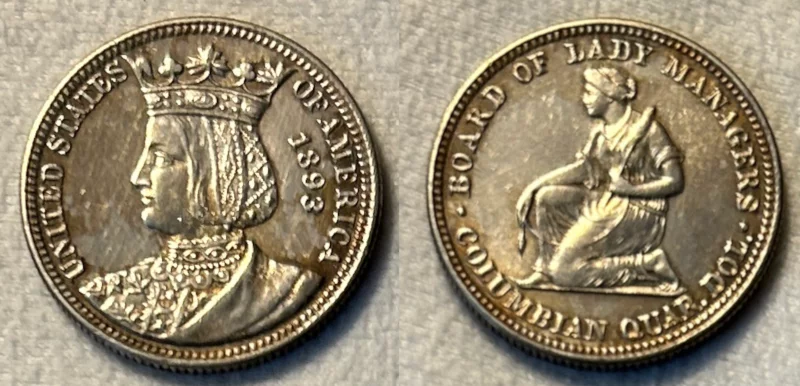
1893 Queen Isabella Commemorative Quarter. (Image via me)
A few things I’ve picked up from researching early commemorative coins:
- The people behind them always hope they can raise a ton of money for a pet project or monument or expo. They rarely do.
- The designs usually get denigrated by the numismatic press – oftentimes with a venom critics reserve for Limp Bizkit albums or Michael Bay movies.
- The mint melts down the excess/unsold coins. As a result, the ones that did sell end up becoming valuable decades later – screwing over collectors on a budget like yours truly.
Those issues were all in play for the 1893 Isabella Quarter.
The Queen Isabella commemorative quarter traces its beginnings to the World’s Fair: Columbian Exposition, held in Chicago in 1893. Congress had already authorized the minting of a commemorative half dollar featuring Christopher Columbus, but a group of women, led by Bertha Palmer, whose husband, Potter, owned the famed Palmer House hotel in Chicago, thought they could do better.
Spearheaded by renowned women’s rights activist, and future $1 coin subject, Susan B. Anthony, the Board of Lady Managers had been awarded $10,000 in federal funds to help manage the Columbian Expo. In early 1893, the Board went before the House Appropriations Committee to ask that the $10,000 could be paid to them in the form of 40,000 specially designed commemorative quarters, which they could then sell at a profit. Congress obliged and the Board set about becoming “the authors of the first really beautiful and artistic coin that has ever been issued by the government of the United States.”
Obviously, the Board wanted a female on the obverse and decided on Queen Isabella I of Castile, who had provided vital financial support for Columbus’s voyages. Putting a foreign monarch on U.S. currency was unprecedented (indeed, there had a been a revolution over it), but according to Coin Week, the main source of conflict was over design.
Caroline Peddle, a former student of famed artist and coin designer Augustus Saint-Gaudens, was hired by the Board to design the coin. However, her sketches, which included a seated Isabella on the obverse and the inscription “Commemorative coin issued for the Board of Lady Managers of the World’s Columbian Exposition by Act of Congress, 1492–1892” on the reverse, were deemed to look too token-like and rejected. Rather than be allowed to redesign the coin, the Mint took away the reverse side and gave it to one of their in-house artists, Charles Barber, to design.
After some more back-and-forth and additional restrictions imposed by the Mint, Peddle resigned. The Mint then cobbled together some portraits of Isabella and ultimately produced an image of a young Isabella wearing a crown on her head for the obverse. On the reverse, the Mint went with an image of a woman kneeling while holding a distaff and spindle- symbolizing her industry. The Board had suggested an image of the Woman’s Building at the Expo, and Palmer later stated that the Board disliked the Mint’s reverse image because “we did not consider [it] typical of the woman of the present day.” However, the Mint made the final decision and approved the coin design.
To say that the reception for the commemorative quarter was not warm is a bit like saying that the American public didn’t embrace Apple’s Newton. The American Journal of Numsimatics was particularly brutal:
[W]e do not know who designed it, but in this instance, as in the half dollar, the contrast between examples of the numismatic art of the nation, as displayed on the Columbian coins, on the one hand, and the spirited and admirable work of the architects of the buildings, for instance, on the other, is painful. If these coins really represent the highest achievements of our medalist and our mints, under the inspiration of an opportunity without restrictions, the like of which has never been presented hitherto in the history of our national coinage, we might as well despair of its future…
The American Journal of Numismatics in October 1893, quoted by PCGS.
The Journal also drew a “mournful” comparison between the reverse design of the kneeling woman holding the distaff and spindle and the well-known “Am I Not a Woman and a Sister?” anti-slavery Hard Times Token. Surely, the Board felt vindicated by that line – although there’s no evidence Palmer or anyone else affiliated with them ever wrote to the Mint to say: “See? I told you we should gone with the building on the reverse.”
 1838 HT-81 “Am I Not A Woman & A Sister?” (Image via me) Sales figures, meanwhile, were disappointing. Of the 40,000 coins minted, a little more than half (21,180) ended up selling. According to NGC, the quarter’s sales were cannibalized by the Columbian Expo half dollar, which sold for the same price and was more widely available at the fair (5 million Columbian Expo half dollars were minted – 125 times as many compared to the Isabella quarter). While it didn’t come close to selling out, Coin Week points out that the quarters, which sold for $1 each, ended up being profitable for the Board. A $20,000-plus stream of revenue may not have been much, but it was double the original federal appropriation awarded to the Board. Of the remaining 19,000-plus quarters, approximately 15,000 went back to the Mint for melting.
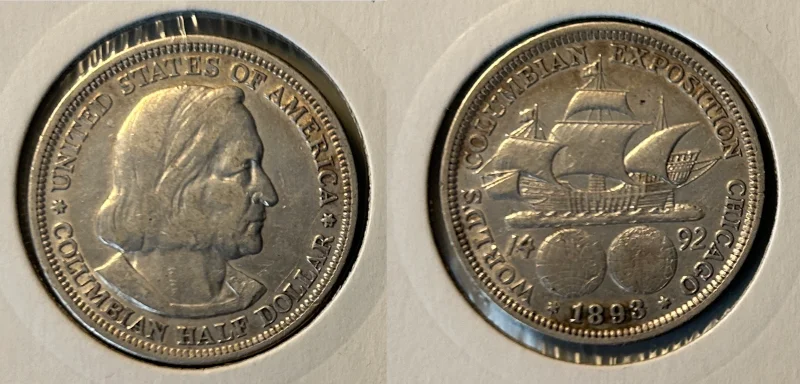 1893 Columbian Expo Half Dollar. (Image via me) In recent years, the coin’s reputation has been rehabilitated and has become a highly sought-after collector’s item. Contemporary reviewers have praised its quaint design and its uniqueness among U.S. commemorative coins (until the modern commemoratives came around, it held the distinction as the only commemorative quarter in U.S. history – as well as the only one to depict a foreign monarch). Even the reverse of the coin has been somewhat vindicated. Art historian Cornelius Vermeule argued that the design wasn’t necessarily evocative of the anti-slavery token and even traced elements of it back to antiquities. “[S]ome details of drapery to a servant girl from the East Pediment of the Temple of Zeus at Olympia, work of about 460 B.C. with additions and revisions in the first or second centuries A.D.,” he wrote.
I love the design and how it distinguishes this coin from other early commemoratives. Too many coins from that era have a generic male bust on the obverse and either an eagle or state symbol on the reverse. Because of the relative scarcity of this coin, buying one wasn’t cheap (this one had been cleaned, which lowered its value, but it still ended up costing over $100). The price tag was worth it, as this has become one of my favorite coins.
So I guess the lesson here is that I should buy more modern commemoratives – even those that I think are ugly. After all, maybe they’ll skyrocket in value in 100 years…
See Also:

In "The Coin Blog"

In "Politics"

In "Law"
https://victor-li.com/isabellaquarter/
|
|
|
|
|
|
|
|
New Year's Prophecy
Intertemporal Perspective via 2016 Tower & Star Rituals
By Goro Adachi
December 30, 2016

Century II - 41
The great star will burn for seven days,
The cloud will make two suns appear:
The large mastiff will howl all night
When the great pontiff changed territory.
- Nostradamus
Not all New Year's Days are created equal and this one coming up happens to be a special one. The previous one was special as well, both being attached to the year 2016, the point of no return. And if the pattern holds, we are in for a whole new set of inter-temporal "clues" which, if decoded properly, should be quite prophetic in nature. Decoding these things happens to be my specialty, or obsession...
It's telling that The Economist's annual, end of the year crystal ball edition features a cover with tarot cards. Obviously they were inspired by the irresistible combination of "Trump" (cards) and the idea of divination (predicting the future). Not too surprising there. (What is surprising though is how most people trying to "decode" it can't even crack the first step: The only two tilted cards, "Judgment" and "The Star", are card #20 and card #17 per tradition, spelling out "20-17" or "2017".)
The Economist is actually a bit late to the party as there was a whole lot of foreshadowing going on last year through the tarot symbolism on New Year's Eve/Day (2015/2016). It came in the form of Dubai's tower inferno evoking the Tower card numbered 16 (as in 20 16)...
...in effect foreshadowing the earthshaking rise of "Trump" who famously lives in Trump Tower (= Tower trump card).
Extending the pattern forward in time would have the new year 2017 correspond to tarot card #17 - " The Star".
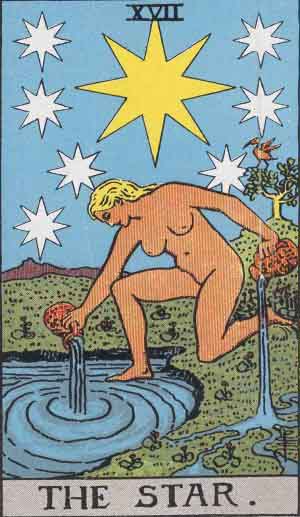
It would most certainly be Sirius on New Year's Eve/Day as a magical celestial moment arrives every year when the brightest star in the night sky "culminates" due south reaching its highest point right around midnight on New Year's Eve/Day.
But as I said, it's extra special around 2016. I'm quite aware of this, and it seems so was Nostradamus. Let me introduce you to quatrain II-41, or as I like to call it the "Sirius quatrain":
Century II - 41
La grand' estoille par sept jours bruslera,
Nuee fera deux soleils apparoir:
Le gros mastin toute nuit hurlera,
Quand grand pontife changera de terroir.
The great star will burn for seven days,
The cloud will make two suns appear:
The large mastiff will howl all night
When the great pontiff changed territory.
- Nostradamus
Right now it is highly relevant and timely as shown below:
Line 1: The great star will burn for seven days
Being the brightest star in the night sky, Sirius certainly qualifies as a "great star". It "burns" in the sense that the name "Sirius" means "scorcher" plus the phrase "Dog Days of summer" derives from Sirius's nickname "Dog Star". Even the "seven days" (sept jours) part relates to Sirius in that ancient Egyptians called the star Spd, Spdt, or Sept, resonating with the French sept meaning "seven. ("Seven days" can also allude to the 7-day festival Saturnalia, Dec 17-23.)
Line 2: The cloud will make two suns appear
In esoteric tradition Sirius has been considered the "second sun".
Line 3: The large mastiff will howl all night
Sirius is the "Dog Star" ("mastiff") and it "howls all night" on New Year's Eve/Day by being visible all night long. (Culminating around midnight implies being visible from dusk to dawn.)
Line 4: When the great pontiff changed territory
The last time there was a change in the papacy was back in 2013 when Pope Benedict XVI stepped down and Pope Francis took over. Unbeknownst to most, it managed to multicontextually encode an arrow pointing ahead to the year 2016:
- Pope Benedict XVI is "16" (XVI), numerically resonating with 2016 and the Tower card (XVI)
 
- Pope Francis's first foreign trip ("changing territory") as head of the Catholic Church was to Rio de Janeiro, Brazil in July 2013, where the Summer Olympics would take place in 2016
 Aug 05, 2016 Rio Olympic Games begin
- A geo-alignment pinpointing Rio was implied via Pope Benedict XVI's resignation announcement taking place concurrently with a major meteor impact event in Russia
Feb 11, 2013: Pope Benedict XVI announces resignation Feb 15, 2013: Major meteor impact in Chelyabinsk, Russia  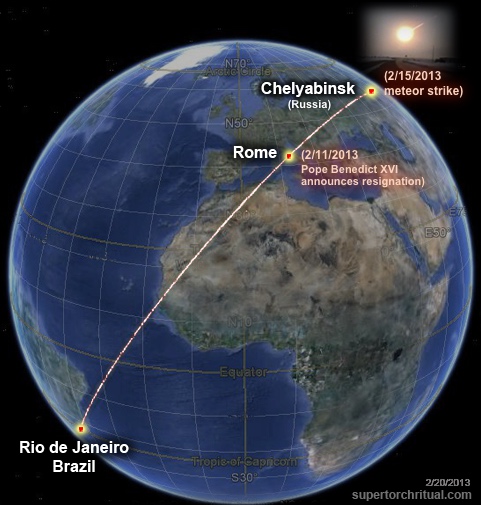 In the context of the "Sirius quatrain" II-41, it makes a lot of sense for Rio to be highlighted in this manner. It has to do with the real, hidden reason behind the name "Rio de Janeiro" or " River of January" which I'm revealing here for the first time anywhere (aside from STRUG/members section which is always ahead)... Firstly, the term " January" (Janeiro) derives from Janus the god of beginnings, endings, time, and doorways. Basically a perfect set of descriptions for New Year's Eve/Day (= beginning of January).
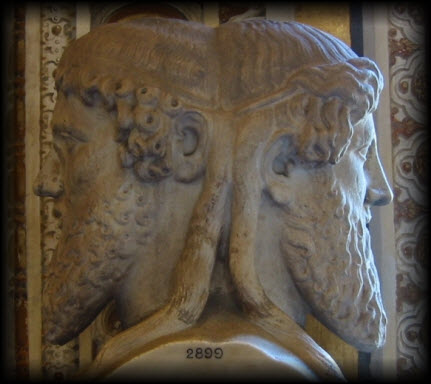
And it just so happens it's right around New Year's Day, when Sirius "howls all night", that Rio and the Sun are aligned in terms of latitude & declination. In other words, the Sun is directly overhead at noon in Rio right around New Year's Day. Rio in this way indeed is a "city of Janus/January"!

As above, so below... Sirius is the " New Year's star" above, Rio de Janeiro is the " New Year's city" below. Having established this and 2016 being the year of the Rio Olympics, we can then quite easily infer that the beginning and ending of 2016 are of special, "ritualistic" significance. We already saw this in action at the beginning of 2016 (Dubai tower fire), and we are now about to witness something at the end of 2016. The straightforward expectation would be that it would reflect " The Star" card - #17 representing "2017" - just as the Dubai tower inferno was a simulation of the "Tower" tarot card, #16. This would mean it would likely involve Sirius on New Year's Eve/Day. (I may actually already know the ritual taking place, but I'll save it for another article, perhaps early next year.) There is another approach here to discerning the nature of the end of 2016 "ritual(s)". It has to do with the fact that Rio and the Sun are also aligned on ~December 10th (equidistant from the solstice).
That "preview" window precisely coincided with a major geopolitical flareup stemming from the apparent Russian cyber attacks against the US during the 2016 presidential election.
 It's an ongoing situation, happening in real time as I write this and it wouldn't be surprising if we hear more about the US retaliation against Russia around the New Year's Eve/Day weekend, such as actual US cyber attacks against Russia.
(I've consistently pointed to the significance of the Russian cyberwar situation since the very beginning. See: Jul 26 tweet, Jul 27 tweet, Jul 30 tweet, Aug 30 update. Here we are, it's like the Cold War has returned.) Saturnalia (Dec 17-23) was another important window we were watching very closely... (Saturnalia starts on Pope Francis's birthday, by the way.) My tweet from Nov 24:
And it was intense indeed...
Notable as it connects right back to the 2015-2016 New Year's Eve/Day "ritual". The name "Dubai" means "market". And the fire there took place right next to the Dubai's spectacular New Year's fireworks.
Makes us wonder if these constitute an omen foreshadowing a major market/financial event coming in the New Year.

I'm going to end this article here, but really we've just scratched the surface. Just the tip of the iceberg for what's unfolding... because 2016 was a tipping point, the point of no return. We didn't even touch on the earth changes and the sixth mass extinction already being discussed on STRUG...
https://www.goroadachi.com/etemenanki/newyears-prophecy.html |
|
|
|
|
Vézelay, Saint Maximin and the relics of Mary Magdalene

Vezelay and Saint Maximin, an incredible “war” for the relics of Mary Magdalene
Mary Magdalene did not immediately have a great aura in the history of the Church. It was not until the 7th and 8th centuries that she began to be favored in monastic circles, where the accent was placed on repentance and forgiveness by welcoming sinners there. The life of the saint – a sinner who became an ascetic – then merges with the traditions concerning the life of Mary the Egyptian. She was a prostitute of the six century who would have done penance in the desert, on the other side of the Mediterranean.
In the 11th century, the monasteries, under the influence of the order of Cluny, took on social and economic importance. There is also a tremendous cult around all kinds of relics brought back from the Holy Land or purchased in Constantinople. Having relics of great saints is important at this time. It is because there are relics that pilgrimages are organized and pilgrimages pay off. In Vézelay at the beginning of the 11th century the monastery was in full decline. Wishing to promote his abbey, Abbot Geoffroy (1037-1052), friend of the pope, ambitious and close to princes “discovered” (“invented” is the term of use) and exhibited the relics of Mary Magdalene. Pilgrims flock.
 Relic of Mary Magdalene, Vezelay basilica In 1050 Mary Magdalene officially became the patron saint of Vezelay abbey.
Over the 11th and 12th centuries, the abbey, many times enlarged and rebuilt, was transformed into a magnificent sanctuary, with splendid Romanesque portals. It was an important stopover on the way to Compostela. The city took advantage of the influx of pilgrims. In the 12th century, its population amounted to 10,000 inhabitants, a considerable number for the time. Vézelay then became a center of great importance for the West.
Under the protection of the powerful dukes of Burgundy, in 1146, Saint Benedict preached the second crusade there. King Louis VII, Queen Eleanor and a crowd of nobles, prelates and people gathered on the hill.
In 1190, Richard Coeur-de-Lion and Philippe-Auguste met there at the start of the third crusade.
In 1217, François d’Assise chose the hill of Vézelay to found the first Franciscan establishment on French soil.
 Saint Bernard preaching the 2nd Crusade, in Vézelay, in 1146, Émile Signol – Public domain How the relics of Mary Magdalene arrived in Vézelay ?
Natural curiosity, but unsatisfactory answers.
We accepted the idea that it was Gérard de Roussillon who would have organized the transfer of the relics during the foundation of the abbey, relics that we would have gone to look for in Saint-Maximin where we knew that the saint had her burial. .
The bishop of Autun launched a prohibition against the pilgrimage. We then asked for the arbitration of the Pope. Pascal II, who by a bull given in 1103, broke the prohibition of the bishop and invited all the French to make the pilgrimage of Vézelay. The pilgrimage then took off, these were the great hours of Vézelay.
However, doubt persisted, not about the burial of Mary Magdalene in Provence, but about the transfer of her relics to Vézelay and their authenticity. We didn’t have much to show as relics in Vézelay, where we talked about them a lot without ever really presenting them in public.
“Presentable” and “indisputable” relics were needed. It was then that in 1265, relics were exhumed in Vézelay, kept in a box which would have been deposited in the crypt in 920 more than three centuries earlier. A certificate of authenticity in the box proves this!. “…under the high altar, a metal chest, long square, which contained some relics wrapped in two veils of silk, with a certain quantity woman’s hair”. There was also a letter from a King Charles certifying that “in this coffer is contained the body of the blessed Mary Magdalene”. (Act drawn up by Gui de Mello, bishop of Auxerre and Pierre, bishop of Panéade.)
Saint Louis officially recognized the relics and went to Vézelay for their elevation in 1267.
 Vezelay basilica  St Maximin basilica
Nevertheless, the doubt still persisted.
Twelve years later, in 1279, Charles II, Prince of Salerno, nephew of Saint Louis, who had come to Saint-Maximin on pilgrimage and had carried out a solid investigation, was convinced that the tomb of Mary Magdalene was in the crypt. where Saint Maximin had once buried her.
He organized excavations which led to the discovery of several sarcophagi. In the so-called “Sidoine’s sarcophagus” was discovered the body of Mary Magdalene with an inscription on a wooden tablet on which appeared simply: “Here lies the body of Saint Mary Magdalene.”

And finally, for the Abbey of Vézelay, the miracle will not take place.
Indeed, Pope Boniface VIII definitively put an end to this “battle” between the 2 cities when he recognized the authenticity of the relics discovered by Charles II at Saint Maximin.
Vézelay will have to submit to the spiritual authority of the Pope. At the end of the 13th century, it is the beginning of the decline of the pilgrimage of Vézelay.The reliquary in the crypt of Vezelay contains a piece of her rib bone, given by the Dominican monks of St Maximin.
https://www.magdalenesacredjourneys.com/vezelay-saint-maximin-and-the-relics-of-mary-magdalene/ |
|
|
 Primer Primer
 Anterior
25 a 39 de 39
Siguiente Anterior
25 a 39 de 39
Siguiente
 Último
Último

|
|
| |
|
|
©2025 - Gabitos - Todos los derechos reservados | |
|
|











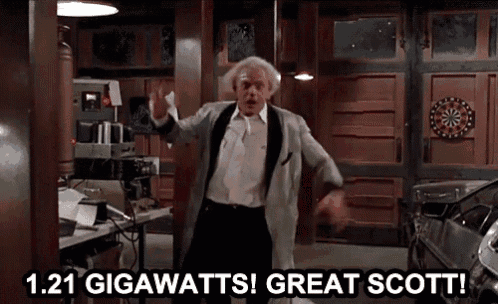















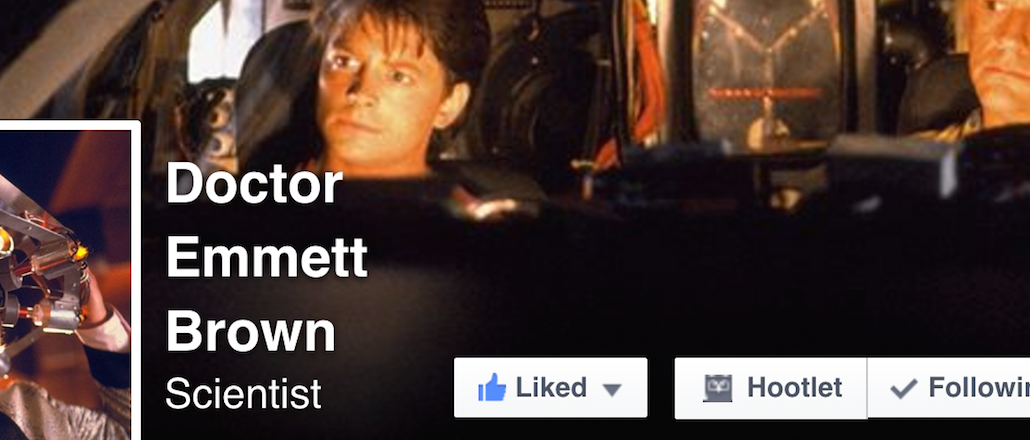
































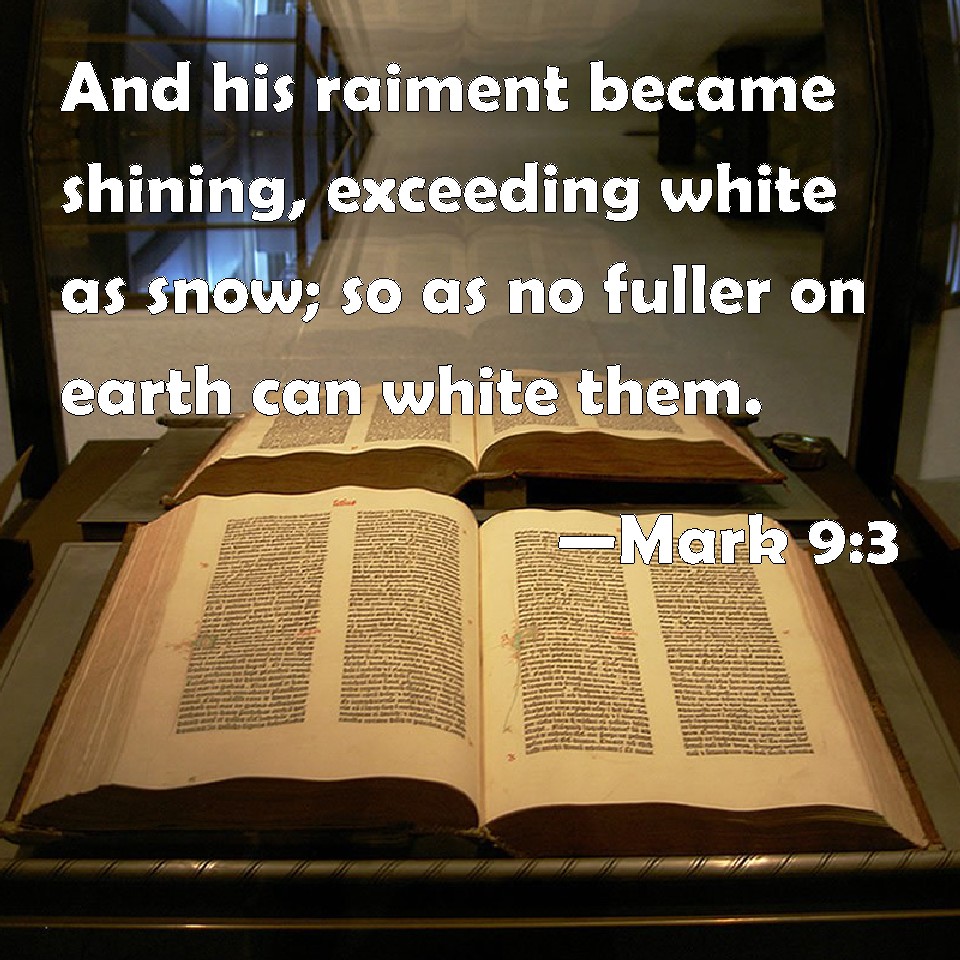



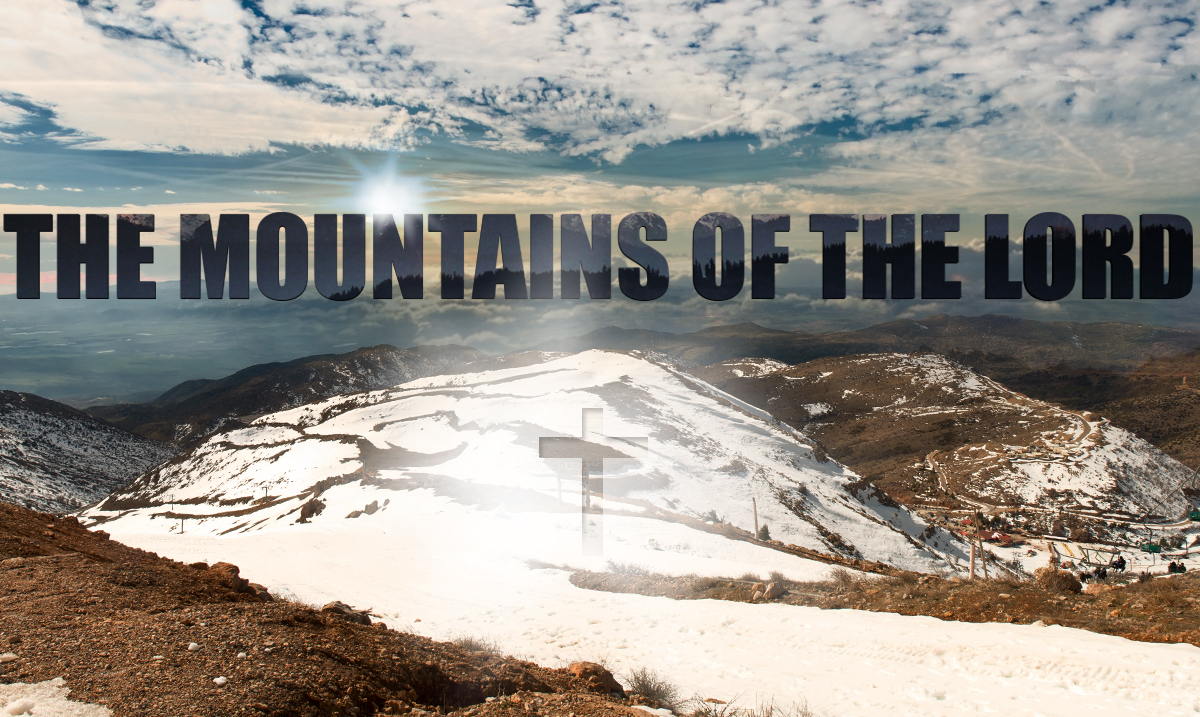




![Revelation 1:14 (lsv) - and His head and hairs [were] white, as if ...](https://img2.bibliaya.com/Bibleya/verse/revelation-1-14-lsv.jpg)


















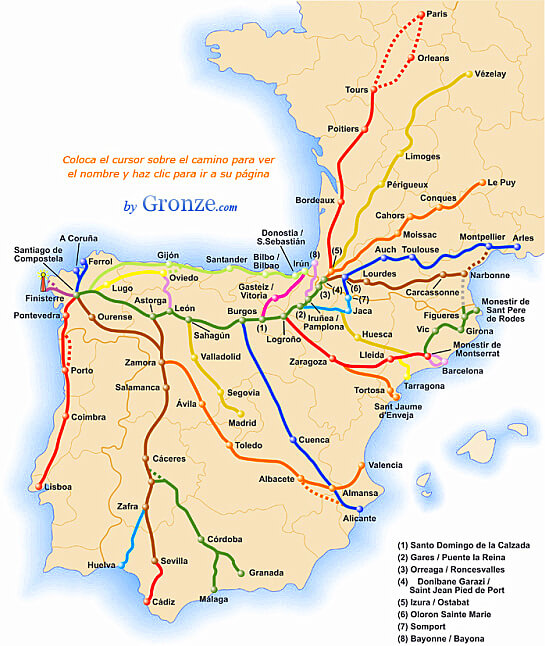


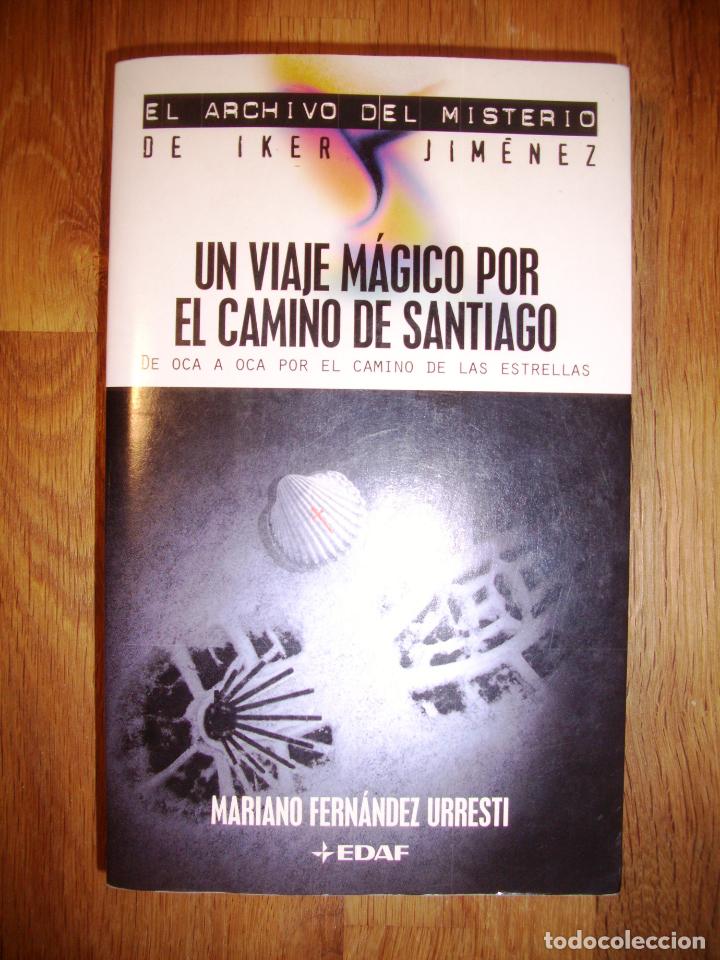


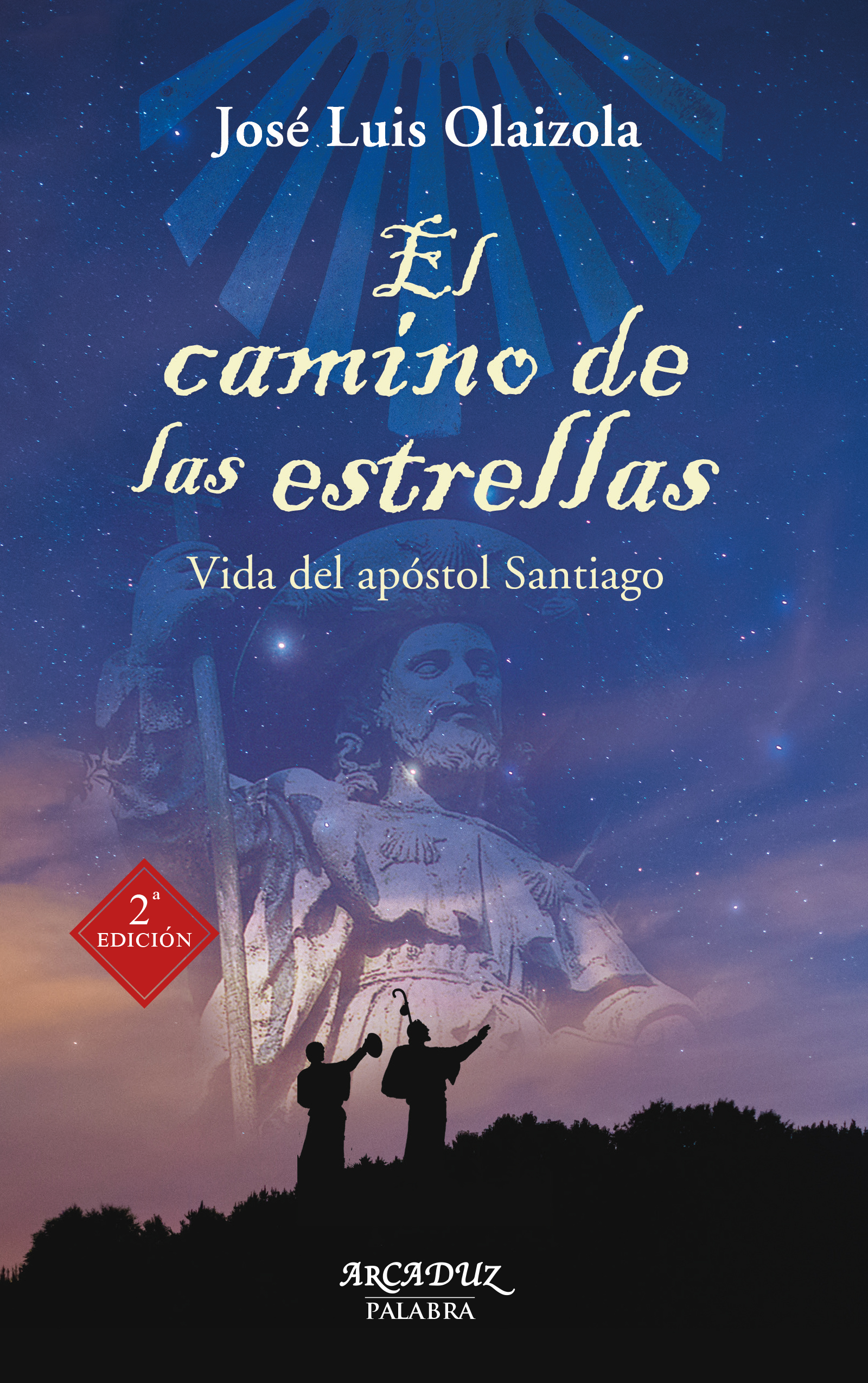












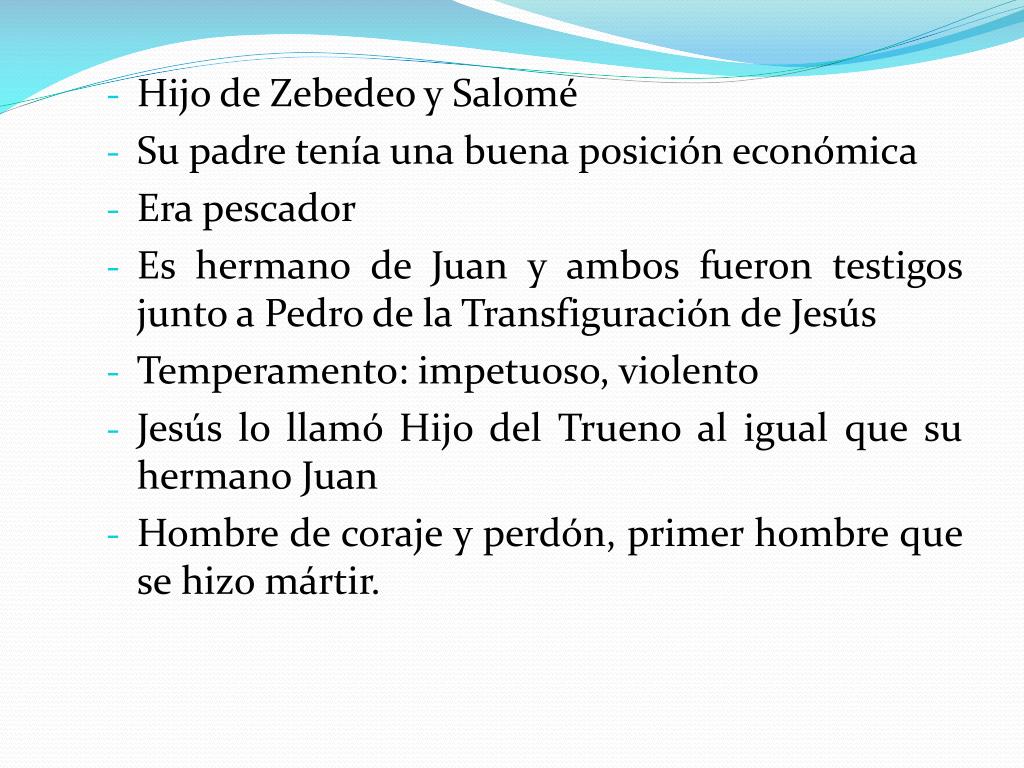






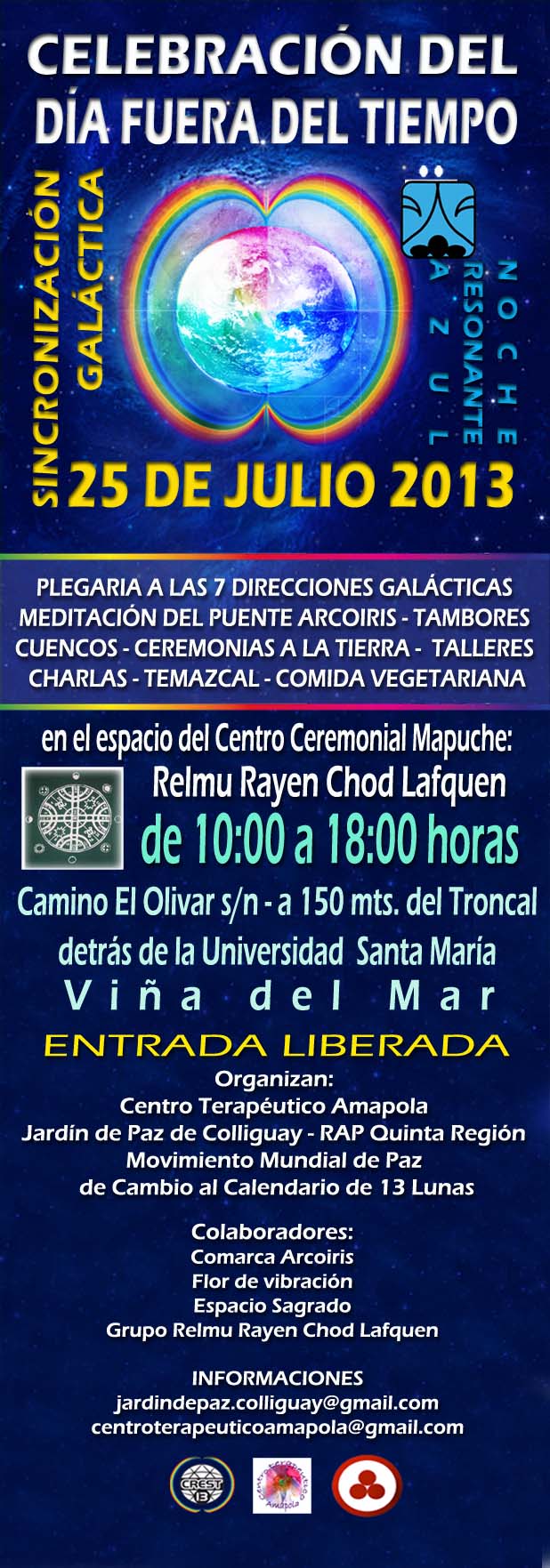

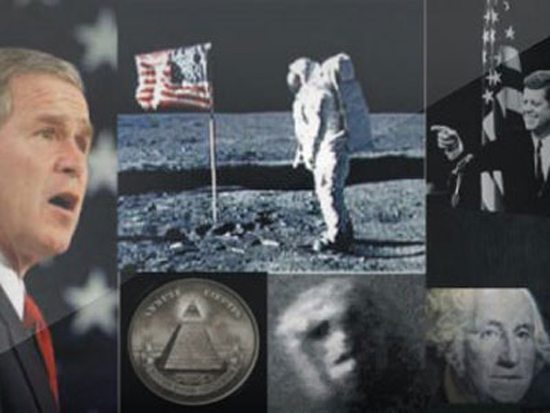





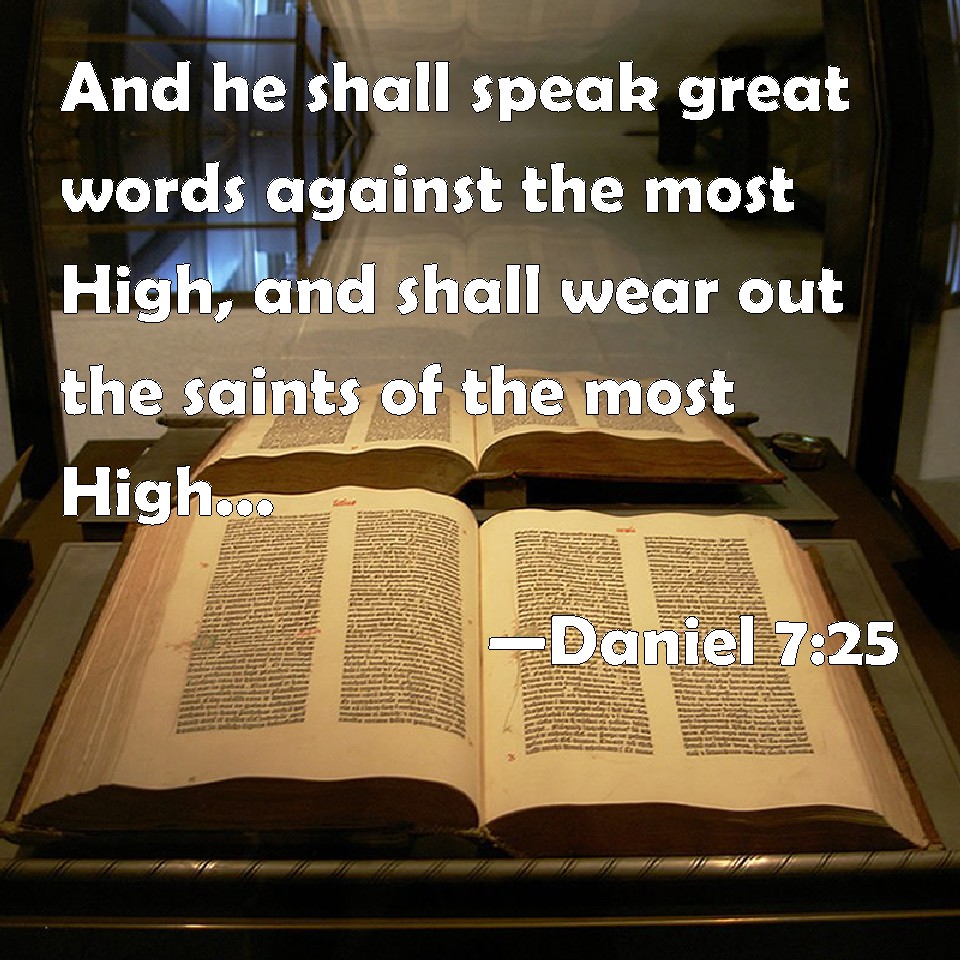










 1838 HT-81 “Am I Not A Woman & A Sister?” (Image via me)
1838 HT-81 “Am I Not A Woman & A Sister?” (Image via me) 1893 Columbian Expo Half Dollar. (Image via me)
1893 Columbian Expo Half Dollar. (Image via me)































 Relic of Mary Magdalene, Vezelay basilica
Relic of Mary Magdalene, Vezelay basilica Saint Bernard preaching the 2nd Crusade, in Vézelay, in 1146, Émile Signol – Public domain
Saint Bernard preaching the 2nd Crusade, in Vézelay, in 1146, Émile Signol – Public domain Vezelay basilica
Vezelay basilica St Maximin basilica
St Maximin basilica


